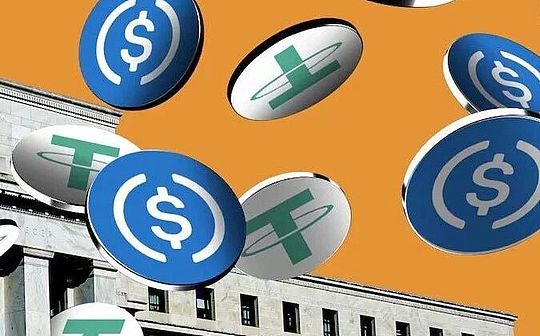
Author: Ray Dalio, founder of Bridgewater Associates; Source: X, @RayDalio; Compiler: Shaw Bitcoin Vision
Recently, I have received a lot of questions about gold, so I decided to focus on answering and organizing them into a collection of frequently asked questions about gold. I also entered these contents into my “digital alter ego” Digital Ray, so that more people can discuss the topic of gold in depth.
But I also want to briefly share what I consider to be the most important points about gold, which is the purpose of this article.
There is no doubt in my mind that gold is a currency and the currency with the least risk of devaluation and/or confiscation.
Here’s why I think that’s the case.
For thousands of years, gold was considered currency in almost all countries, while all other currencies died.
Here’s how it worked, and it still works today.
Throughout history, all money (i.e. currency in circulation) has either been:
1) A currency “linked to gold/backed by hard assets”, refers to a currency that is pegged to gold, or to a similar globally recognized asset such as silver that has a limited supply.These currencies are government promises that allow individuals or governments to exchange “paper currency” for gold (or other “hard assets” such as silver) at a fixed exchange rate.
2) “Fiat” currency, refers to currencies that are not tied to/backed by any asset, so their supply is not limited.
Throughout history, monetary systems have collapsed when they were tied to gold and the debt (i.e., the promise to deliver gold currency) was too high relative to the total amount of gold currency available.This is because leaders either: a) stick to their promises to back their currencies with gold, leading to debt defaults and deflationary depression, or: b) renege on their promises to deliver gold at the promised price, allowing massive creation of money and credit, which usually leads to currency devaluation, which in turn drives up inflation and the price of gold.
Before the advent of central banks (introduced in the United States in 1913), the economy generally followed a) a deflationary path; after the advent of central banks, it followed a b) inflationary path.Either scenario would lead to a severe debt/monetary system collapse/crisis that would lower debt relative to income repayments and ultimately fix prices at new, higher levels.(This is why prices rise over time.) The last two collapses of gold-linked/gold-backed monetary systems occurred in 1933 and 1971.
In 1971 we moved away from a gold-linked currency system to a fiat currency system.Precisely because we are now in a fiat currency system, studying what happened in fiat currency systems in the past when there was an excess of debt relative to the funds needed to repay the debt is more relevant to the present.In that case, the central bank will always print a lot more money and credit, which usually leads to higher inflation and higher gold prices.
In all of these cases, gold has performed well as an alternative currency to “paper debt money.”In the long run, it is the currency with the strongest ability to store value.Because of this, it is now the second largest reserve currency held by central banks.
But that doesn’t mean other currencies are less capable of storing wealth than gold in the long run.This is because “paper money” accrues interest, whereas gold does not.Therefore, when interest rates are high relative to the rate at which banknotes depreciate, these banknotes deliver higher returns.
If one chooses to time trade (which I advise against), one should hold paper currency when interest rates are high enough to compensate for the risk of default and devaluation of the debt held by paper currency.But when interest rates are insufficient to cover the risk of depreciation and default on paper debt, holding gold is a wise move.
Alternatively, one could choose not to try to time the market and instead hold a certain amount of gold at all times.Gold, like cash, has a low real yield of around 1.2% and is inversely correlated with cash.Therefore, gold and cash can be considered a good option in any environment where liquidity is required.
Gold is also favored because it carries a lower risk of confiscation than other currencies and assets.This is because the value of gold is not dependent on payment from others, and it is more difficult for individuals or governments to confiscate it.Gold is the hardest currency to plunder because it can be safely held by individuals and does not require payment from others to gain value like other currencies.It also cannot be stolen in a cyberattack.Therefore, when there is a high risk of currency confiscation, such as: a) a financial crisis leading to high taxes and other confiscation policies; b) economic and currency wars between countries (e.g. sanctions), gold becomes the asset of choice.
Therefore, in times of currency/debt crisis and/or war, when the risk of confiscation increases, gold’s value rises significantly (or to be more precise, it is the only currency that does not depreciate).This is why gold has long been the most fundamental currency, and has the best record of keeping its value in step with the cost of living over long periods of time.
This is how the debt/currency/gold dynamic worked, and it still does today.This is particularly noteworthy when the debt is large relative to the amount of funds required to repay the debt, and when there is a risk of forfeiture.
gold investment
As an investment asset, I look at gold the same way I look at all other assets when constructing my portfolio, i.e. looking at its expected return, risk, correlation with other assets and liquidity to develop a strategic asset allocation portfolio.I will then consider what tactical adjustments to make to the portfolio based on market dynamics.So I think gold has certain properties as part of an investment portfolio, just like holding a certain amount of cash.
This view is very different from the way most people view gold, which is a speculative market.Thinking of gold as a base currency has been helpful to me, and maybe you should consider it too.If you disagree with me, please let me know and we can explore the truth together to better cope.
When I think about how much gold I should hold in my portfolio, I think of it first and foremost as a strategic asset allocation rather than a tactical/market timing decision.I believe that the starting point for everyone’s investing should be to understand and hold the portfolio that works best for them, independent of any market timing views.Adjustments to an existing portfolio should only be made when investors believe they are better able to time the market and determine which investments are superior.Most investors do not have this ability, so they should stick to an established strategic asset allocation.
So when investors ask me whether they should decide to buy or sell gold based on whether gold prices rise or fall, I tell them that this is a secondary strategic question because the first thing they should consider is how much gold they should hold in their strategic asset allocation.According to my own analysis, this ratio is between 5% and 15%, depending on other assets in the portfolio and the investor’s risk appetite.
As for tactically overweighting or underweighting gold in a portfolio based on market timing, as mentioned earlier, gold should be overweighted at times when the risk of monetary system collapse, currency confiscation, and economic/currency war (e.g., sanctions) is higher, and underweighted at other times because gold has been a relatively poor performing asset over the long term (just like cash) because it is not a productive asset.
In short, what I want to express is that you should regard gold as a base currency and at least hold a certain proportion of it.But most investors aren’t holding gold.






